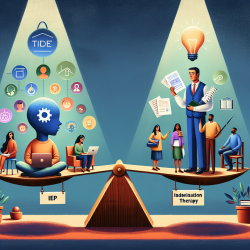Introduction to Serotonin's Role in the Brain
Serotonin, a key neurotransmitter in the brain, plays a crucial role in regulating mood, emotion, and cognitive functions. Understanding its complex mechanisms can significantly enhance therapeutic outcomes, particularly in children who are the focus of services provided by TinyEYE. Recent research by Wong-Lin et al. (2017) suggests that a multiscale modeling approach can offer deeper insights into serotonin's functions, potentially transforming therapeutic practices.
Key Findings from the Research
The study, titled Toward a Multiscale Modeling Framework for Understanding Serotonergic Function, highlights the importance of integrating various biological scales—from intracellular signaling to behavioral outcomes—into a cohesive computational model. This approach helps in understanding how serotonin affects different brain functions and behaviors.
How Practitioners Can Benefit
For practitioners, especially those involved in speech and language therapy, understanding these mechanisms can lead to more effective interventions. Here are some practical ways to apply these insights:
- Data-Driven Decisions: Use computational models to predict therapeutic outcomes based on serotonin levels, allowing for personalized treatment plans.
- Enhanced Interventions: By understanding the multiscale effects of serotonin, tailor interventions that address both cognitive and emotional aspects of speech and language disorders.
- Further Research: Encourage ongoing research into serotonin's role in communication disorders, which can lead to innovative therapeutic techniques.
Encouraging Further Research
The complexity of serotonin's functions underscores the need for continued research. Practitioners are encouraged to explore how these findings can be applied to their specific areas of expertise, particularly in developing new therapeutic strategies for children.
Conclusion
Understanding serotonin through a multiscale modeling framework offers a promising avenue for improving therapeutic outcomes. By leveraging these insights, practitioners can enhance their interventions, ultimately leading to better outcomes for children. To delve deeper into the original research, please follow this link: Toward a Multiscale Modeling Framework for Understanding Serotonergic Function.










